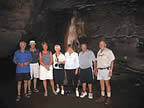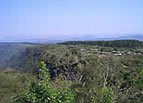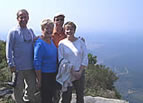PLACES TO SEE
SUDWALA CAVES
|
SUDWALA CAVESThese caves are the oldest known to mankind, formed over 300 million years ago. Prehistoric man discovered these caves and at the beginning of the 19 th century they were used as refuges by sections of the Swazi people. One of their kings, Sobhuza 1, is said to have hidden in the caves to escape Zulu raiders. One of Sobhuza's brothers, Somcuba, built a capital for himself close to the caves, using it as a retreat whenever Mswati (Sobhuza's heir) attempted to recover stolen cattle.
He even created a defensive alliance with the Lydenburg Republic, about which there is an old legend that the caves ( whose end has not yet been reached) leads all the way under the mountains to the town of Lydenburg. In the early years of the 20 th century, the caves were exploited for their deposits of bat guano.
It was only when Mr P R Owen acquired the farm that a road was built to the entrance and it was opened to tourists. Falls of rock, underground streams and mud make exploration of its full length difficult. In the 500 m length of the caves open to tourists, there are many dominant and powerful drip-stone formations.
The ceiling of the caves contains fossilised colonies of blue-green algae known as "stromatolites". Such stromatolites, one of the earliest identifiable forms of life in Southern Africa, flourished about 2 000 million years ago.
Contact: (013) 733 4152 : One hour guided tour daily from 08h30 - 16h30 : Crystal Tour - advance bookings only - 4 hr duration |
Life Size, Accurate and artistic : Pre-Historic animals - open 7 days a week.
The Sudwala Dinosaur Park offers children an exciting and educational glimpse into the world of Dinosaurs and other pre-historic animals.
It is situated next to the Sudwla Caves in a lush, sub-tropical forest garden where beautiful cabbage trees, cycads, monkeys and birds abound. Tel: 013 733 5268
BOURKES LUCK POTHOLES back to top
This natural water feature marks the beginning of the Blyde River Canyon. Through countless eons the swirling whirlpools which occur as the Treur River plunges into the Blyde River, caused waterborne sand and rock to grind huge, cylindrical potholes into the bedrock of the river.
The Potholes were named after a gold digger, Tom Bourke, who staked a claim nearby. |
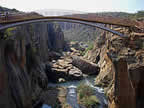 |
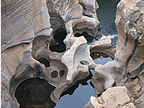 |
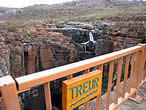 |
Although his claim did not produce a single ounce of gold, he correctly predicted that large gold deposits would be found in the area.The Bourke's Luck Potholes is located 35km north of Graskop town on the R532 road. Just above the confluence of the Blyde and Treur Rivers is a curious formation of rounded holes in the rock caused by the perpetual swirling waters of the Treur River. The trekkers named the Blyde (meaning joy) and the Treur (meaning sorrow) following an incident when their sorrow turned to joy.
LONG TOM PASS back to top
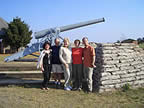 |
The Long Tom Pass was named after the cannon, which the Boers used to try and dislodge the British from Lydenburg in the battle between the Boers and the British in the Anglo-Boer War (1899 -1902) in the Lydenburg area. In 1900 at the Battle of Bergendal, General Botha withdrew towards Lydenburg with two Long Tom guns. He moved east with guns in the direction known as the Long Tom Pass. On the British side General Buller occupied Lydenburg on the 7 September 1900. Botha then shelled the town with the Long Tom guns from the heights. Buller and his force were in possession of two 5 inch guns, and these were used during the action in the town. |
Buller, however, wanted to block the road from Nelspruit to Pilgrim's Rest, so they followed Botha. Although the 5 inch gun's range was comparable to the Long Toms, the Long Toms were more easily moved as they were fitted with 4 wheels, whilst the 5 inch guns had only 2 wheels. The Boers also fired with the Long Toms at ranges which were too far for the British field artillery to reply, and by the time the 5 inch guns had been brought to the front, the Boers and the long Toms had disappeared.
On the 11 September 1900 after the battle was over, Botha passed successfully through the pass with his men and the Long Toms. In 1953 the pass was opened and at some places the road takes a new route, but mostly the route has remained unchanged.The main obstacle along the route was the Drakensberg. In 1871, President TF Burgers ordered the construction of the road over this formidable barrier to the sea. The contract was awarded to Abraham Espag and most of the work was done by pick and shovel. The first wagons to use the new road, which followed the route of the old hawepad in many places, arrived in Lydenburg from Delagoa Bay in 1874. The pass used today was opened on 22 July 1953. Parts or the old road are signposted along the new pass, which was tarred in 1964. At Die Geut (the gutter), ruts can be seen in the slate where the locked wheels of the wagons slid down the steep gradient. Whiskyspruit's water was reputedly so good that it made an excellent drink regardless of the quality of the whisky!
HISTORICAL CHURCHES OF LYDENBURG
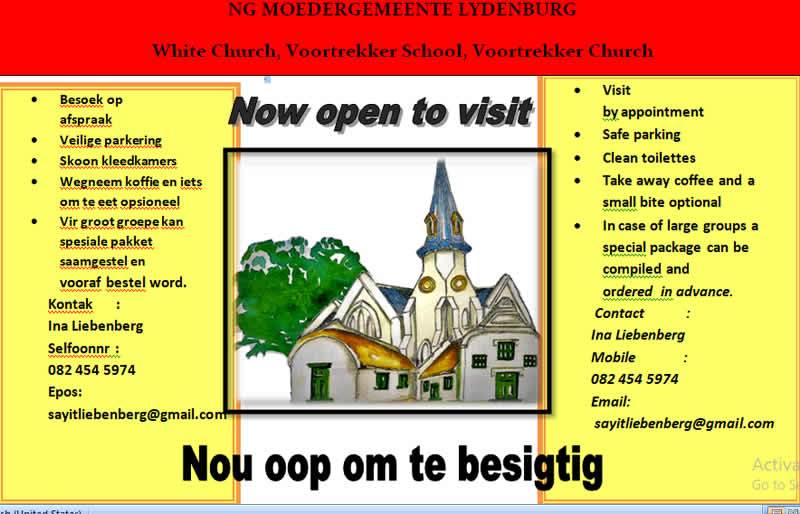
THE LYDENBURG HEADS back to top
In 1957 a young boy, Ludwig von Bazing, aged about nine or ten, was playing in the veld (fields) on his father's farm near Lydenburg. He saw pieces of the now famous Lydenburg heads lying there. Five years later he developed an interest in archaeology and went back to where he had first seen these shards, and over a period of 4 years, he collected pieces of seven heads. He joined the archaeology club of the University of Cape town, who insisted that he take these heads to the University. Carbon dating showed that these heads dated back to the year 490 A.D. and had been made by early Iron Age people. Study of the heads has suggested that they might have been used as masks. However, the neck is very long, as is the distance between the eyes and nose, which makes it rather difficult for the ordinary person to wear one. The purpose of these heads is obscure and one can only speculate that they were probably used during initiation ceremonies.
PILGRIMS REST CLICK HERE FOR MORE DETAILED INFO back to top
BLYDE RIVER CANYON back to top
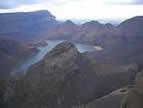 |
The scenic beauty of the Blyde River Canyon, the worlds 3rd largest gorge, is awe-inspiringly magnificent! The Blyde River cuts a zig-zag passage, 16 kilometres long at a depth of 750 metres in the midst of dense vegetation below towering buttresses capped by cliffs of the most remarkable shapes. There are some magnificent viewpoints along this route, including God's Window and The Three Rondawels. On a clear day the view from God's Window extends across the lowveld, past the Kruger Park to Mozambique. |
GOD'S WINDOW back to top
|
|
A must is God's Window, a viewpoint at an altitude of 1,829m/6,000ft extending northward over the Blyde River Canyon, eastward over the Lowveld, 1,000m/3,300ft below, and the Kruger National Park to the Mozambique border, and westward over forest-covered mountains.
A well laid-out track leads from the parking place to other viewpoints.
One particularly rewarding trip (following signs to the Rain Forest) is on a path which winds its way through evergreen tropical rain forest. God's Window - so called for the panoramic view of the Lowveld. |
In the distance lies the Kruger National Park and Mozambique. From the parking area a steep footpath along the edge of the escarpment leads to the actual view site where there is a Wild Nature Reserve. God's Window is a deep ravine in the edge of the escarpment: an awe-inspiring vew down into the lowveld. A path and motoring track from the parking site of God's window, leads along the edge of the escarpment to the Lowveld Panorama and nature reserve, a beautiful area of indigenous forest with a breath-taking view. In this reserve many flowering and aromatic plants can be found. |
||
THE THREE RONDAWELS back to top
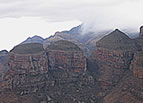 |
Further north along the R532 road, the turnoff to the Three Rondawels viewpoint is 4.6km from the Lowveld View turnoff (41 km north of Graskop) and the parking area another 2.8km further. The Three Rondawels are well known gigantic peaks made from quartzite and shale.
The sheer rock walls of The Three Rondawels tower more than 700m above the surrounding landscape.
The Three Rondawels are named after the three most difficult and quarrelsome wives of Chief Maripi Mashile - they are Magabolle, Mogoladikwe and Maseroto. |
KRUGER NATIONAL PARK back to top
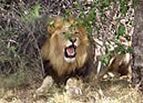 |
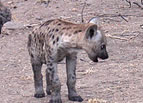 |
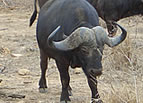 |
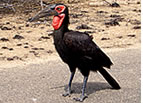 |
In 1898 President Paul Kruger proclaimed the area between the Crocodile and Sabie Rivers as the Sabie Reserve because hunting mania had wiped out the Lowveld's huge herds of game. After the Anglo-Boer war, the British began clearing the way for the protected areas by the forced removal of between 2000 -3000 local inhabitants in1903. These removals continued throughout the Kruger's history. In 1969 the Makukeke people were moved out of the Pafuri area. The dispute over land claims continues today. Major James Stevenson-Hamilton was appointed the first warden. He was a short, quick-tempered Scotsman and was given the African name "skukuza" meaning "he who turns things upside down". He waged constant war against poachers and was responsible for expanding the Kruger Park, incurring the wrath of local farmers who felt that the Reserve was a breeding ground for lions. Both domestic stock and people were often attacked. Piet Grobler, Minister of Lands in 1926 successfully passed the Bill on National Parks and named the area Kruger National Park. In 1927, three cars entered the Park. Two years later there were 850 cars. Over the next 50 years, 150 000 people visited the Park annually. Today, 700 000 people visit the Park every year.
KAAPSEHOOP back to top
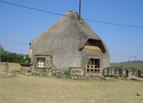 |
Kaapschehoop is famous for the last wild horses of South Africa that roam the town freely.This part of Mpumalanga, South Africa abounds with legends of gold, and horses have an exciting history which dates back to 1721. In 1882 Bernard Chomse claimed to have found gold in the bed of a stream on a high, narrow plateau which projects like a finger between the valleys of the Elands and the Little Crocodile rivers. Situated in the hills above Ngodwana 32km from Nelspruit, the picturesque village of Kaapschehoop has a unique atmosphere. A herd of wild horses has roamed the hills around Kaapschehoop for many years, and is reported to have originated from the release of mine ponies during the gold rush of the 1870's. The diggers called the strange place Duiwelskantoor ('devils reception room'). An early observation says: "No description could convey anything approaching an adequate idea of the difficulties of a journey through this region. The mountains are so rugged that only the devil could live here". |
It became known as De Kaap ('the cape'), and became the Gold Mining Commisioner's headquarters during the gold rush. Kaapschehoop literally means,"'hope of the cape". Today the village of Kaapschehoop offers the environmentally conscious tourist a chance sighting of the famous Blue Swallows, an endangered species, and protected in the grass lands. Prospectors still work in the area. With a little imagination one can see shapes in the rocks: "snoopy", "a lions head", "a laden camel". There are superb walking and hiking trails through extraordinary rock formations. Many artists live here permanently. Richard Branson of Virgin Airlines' fame discovered the work of Harem, a young artist from Kaapschehoop. There are a number of beautiful guest- houses inKaapschehoop, as well as other accommodation to suit all pockets. |
|
MAC MAC FAllS back to top
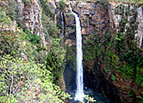 |
When gold was discovered along the Mac-Mac River in 1873, a frenzied gold rush ensued. Many of the miners were Scottish, and therefore the camp was named Mac-Mac. In an attempt to divert the river, the miners placed dynamite on the crest of the Mac-Mac Falls. The explosion split the 64-metre-high waterfall into two splendid streams which plunge into the forested gorge below. There is a viewing platform which overlooks the Mac Mac Falls and visitors can also walk for 2 km along part of the Fanie Botha Hiking Trail to the Mac-Mac pools for a refreshing swim. |
TSAKANI HOUSE OF AFRICA SILKS back to top
Since 1994 Tsakani has become closely associated with the concept of African Silk. It was one of the first companies to develop and market Wild African Silk products in South Africa. The Tsakani product range was originally developed for the Tsakani Silk Farm and includes both wild and cultivated silk products. The company focuses on the creation of fine quality products with a distinct African character, using local technology and resources.Wild African Silk is derived from the Gonometa postica, a species that is endemic to the Southern Regions of Africa. The cocoons of these caterpillars are harvested in the Acacia Veld of the Kalahari. The silk is fawn coloured and slightly textured with a soft sheen.Contact: (013) 755 3213 www.tsakanisilk.co.za
SHANGANA CULTURAL VILLAGE back to top
The Shangana Cultural Village , about 5 km west of Hazyview , just off the R535 to Graskop is also a good place to get a sense of the cultural traditions of the local Shangaan community as well as enjoy an excellent lunch. Entrance is free to the reception area and its craft shop, but the village can only be visited on a guided tour. The tour follows a winding path through fields and bush to the kraal, where a family lives. You'll also meet a sangoma and learn about traditional remedies
DULLSTROOM BIRDS OF PREY AND REHABILITATION CENTRE back to top
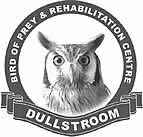 |
We have recently moved to a new site just one kilometre out side Dulllstroom on the Belfast side. We present two presentations daily at the moment where we fly eagles, owls, falcons, hawks etc. It is fun for all the family, great chances for close up photos of all the birds and you even get a chance to handle some of them. A really great wild experience. To help with funds for the centre we have now started our experience days where you get the chance to be a falconer for the day . Also we have our photographic days. look on our web page for details. Also new for 2006 is an extra demonstration at weekends. We now do a 12.30 demonstration and it really is going down a storm with some of our regulars. On a weekend if you come to all three demonstrations you will get the chance to see up to twenty different birds fly. |
MUSEUMS
Belhaven House, Lee Road.
Belhaven, built in 1904, is an example of a pre-fabricated house with corrugated iron outer walls and pressed iron panels on the interior. It is furnished in the style of the late Victorian and early Edwardian periods, and depicts the lifestyle of a wealthy middle class family. Guided tours Mondays to Fridays on the hour between 10am and noon and again at 2pm and 3pm.
Tel: (013) 712-4208. Fax: (013) 712-4208.
Blockhouse, corner of Judge and Lee roads.
The fort dates from 1901, and is an example of the earliest design of the blockhouse constructed by the British in South Africa. During the time of the Anglo-Boer war the British built it as a position of defence against the Boer forces. It was manned by the Barberton Town Guard which consisted of local volunteers under the command of J W Winter. The site can be visited at any time.
Fernlea House, Lee Road.
This wood and iron house was built for Mrs. Emily Fernandez in the early 1890's. She married Mr. Thomas Lee, who had a Photography and Drapery Business in Barberton. The building now houses an exhibition mainly about Rimers Creek and the restoration of the building. Open Mondays to Fridays from 8.30am to 1pm and from 1.30pm to 4pm.
Tel: (013) 712-4208. Fax: (013) 712-4208.
Stopforth House, 18 Bowness Street.
The original house and outbuildings were constructed in 1886 by James Stopforth, originally from England, In 1892 the house was rebuilt. It was occupied by the Stopforth family from 1886 until 1983 and is furnished with the original furniture and household articles used by the Stopforth family between 1886 and 1914. Guided tours Mondays to Fridays on the hour between 10am and 12 noon and again at 2pm and 3pm.Tel: (013) 712-4208.
Fax: (013) 712-4208.
Barberton Museum:
36 Pilgrim Street, Barberton. The main segment of a museum complex, this local history museum gives an introduction to the history and prehistory of the town, including its geology and its mining past. Open daily from 9am to 4pm, closed from 1pm to 1.30pm on Saturdays and Sundays.Tel: (013) 712-4208. Fax: (013) 712-4208.
Bethal Museum:
Market Street, Bethal. Anglo-Boer War cannons flank the entrance of the museum, which contains artefacts and old photographs from this farming community. Open Mondays to Fridays from 10am to 2pm.Tel: (017) 647-6231
Krugerhof Museum:Waterval-Onder.
Paul Kruger's last local place of residence. Open daily from 9am to 4pm.Tel: (013) 712-4208.
Fax: (013) 712-4208.
Lydenburg Museum:
Signposted, Lydenburg. This museum focuses on the history and prehistory of the area. Open weekdays from 8am to 4pm, weekends from 8am to 5pm.
Tel: (013) 235-2121.
Fax: (013) 235-1108.
Pilgrim's Rest:
This entire gold-rush town is a museum, with original buildings, including houses, offices and pubs, restored. Museum open daily from 9am to 1pm and from 1.30pm to 4.15pm.Tel: (013) 768-1060.
Fax: (013) 768-1471
Safcor Industry Museum: Sabie.
Explains the processes and development of forestry.
Open weekdays from 8am to 4.30pm, Saturdays from 9am to 1pm and Sundays and public holidays from 9am to 11am.Tel: (013) 764-2423.
Skukuza Museum: Skukuza, Kruger National Park.
On display are Agfa Wildlife and Environment Award winning photographs, paintings by prominent wildlife artists and displays devoted to the history of the park. There is also a research library. Open daily from 8.30am to 4pm and from 7pm to 9pm.Tel: (013) 735-5611.
Artists' Café
R37, Hendriksdal. A variety of work by local painters is hung in this restaurant/gallery. Open daily from 8am till late.Tel: (013) 764-2309.
Bosch Studio:
Smallholding outside White River. Ceramic studio with a range of work by ceramic artist Anton Bosch, including vast ceramic panels. Open Mondays to Fridays from 8am to 4pm, Saturdays from 8am to noon.Tel: (013) 751-2859. Fax: (013) 751-2859
Civic Centre Art Gallery:
First floor foyer, Civic Centre, Nelspruit. New art and craft exhibitions each month. Open Mondays to Fridays from 8am to 4pm.Tel: (013) 759-9111. Fax: (013) 759-2070.
Eloff Studio:
2km outside White River on the Hazyview road. Zakkie Eloff's wildlife paintings, etchings and sketches are available here, as are Coral Stephens woven hangings, Anton Bosch ceramics and Renee Eloff oils and silkscreens. Open weekdays from 9am to 4.30pm, weekends from 9.30am to 4pm.Tel: (013) 750-1282. Fax: (013) 750-1282
WITBANK MUNICIPAL DAM
Witbank Dam is the biggest municipal dam in the southern hemisphere.
Witbank Municipal Dam can be contacted direct on 013 697 0151 or 013 697 0147
This dam is known as the largest municipal dam in the southern hemisphere and has a catchment area of more than 3 540 square kilometres.
- water sports
- camping, caravan sites and chalet accommodation.
- adjoining nature reserve
- 50 different tree species
- 150 flower varieties, amongst which are the rare ground orchids and gladiola type.
- wide variety of game species
- various trails have been mapped out in the reserve, where 173 bird species can be detected.
 |
Tel/Fax: +27 13 750 0552 +27 86 652 7998 E-mail: echoafrica@mweb.co.za |
 |
We are the largest Safari Operator to specialise in Day Tours into the world renowned Kruger National Park.
We offer Full Day Game Drives and Half Day Game Drives (either a Morning or Afternoon Game Drive).
A Night Safari is also possible and will complete your experience.
|

FOR MORE INFO |
Cell : 079 494 6278 Cell : 061 466 3283 Cell : 061 467 3627 Cell :082 825 0631
Email: |
 |
African Safari Adventures offers an exciting array of experiences, from luxury game lodges to comfortable private bush camps, from a day safari to a week in the bush, from the Kruger to Cape Town or South Africa to Botswana, Zambia, Zimbabwe or Mozambique.
Our selection of tours range from half day, full day and up to 5 days! We can tailor-make a private tour to suit your needs. |
 |
Thandabantu River Lodge is located 5km from the town of Roossenekal. Personal interaction with
|
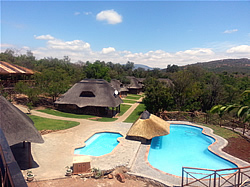 |
Email Address : admin@thandabantulodge.co.za Lodge Office Cell 082 568 9338 Riekert : Lodge Owner : 066 226 1827 Website: |




